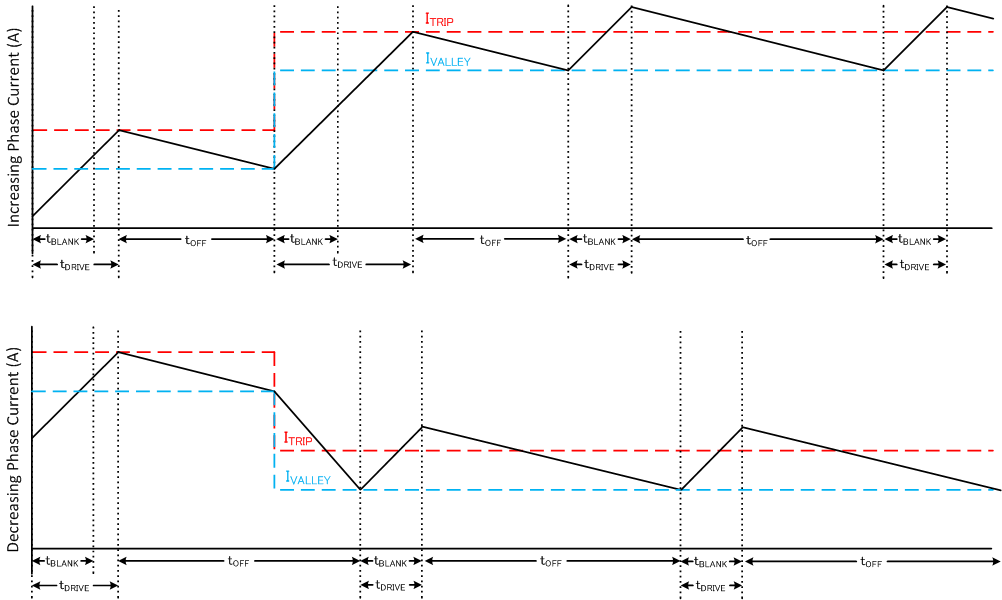ZHCSND1A November 2020 – May 2022 DRV8434
PRODUCTION DATA
- 1 特性
- 2 应用
- 3 说明
- 4 Revision History
- 5 Pin Configuration and Functions
- 6 规格
- 7 详细说明
- 8 Application and Implementation
- 9 Power Supply Recommendations
- 10Layout
- 11Device and Documentation Support
- 12Mechanical, Packaging, and Orderable Information
封装选项
机械数据 (封装 | 引脚)
散热焊盘机械数据 (封装 | 引脚)
- RGE|24
订购信息
7.3.6.5 智能调优纹波控制
 图 7-12 智能调优纹波控制衰减模式
图 7-12 智能调优纹波控制衰减模式智能调优纹波控制通过在 ITRIP 电平旁设置一个 IVALLEY 电平来进行操作。当电流电平达到 ITRIP 时,驱动器将进入慢速衰减,直到达到 IVALLEY,而不是直到 tOFF 时间结束。慢速衰减的工作原理类似于模式 1,其中两个低侧 MOSFET 都导通,允许电流再循环。在此模式下,tOFF 根据电流电平和运行条件而变化。
通过 TOFF 引脚对该衰减模式下的纹波电流进行编程。纹波电流取决于特定微步进级别的 ITRIP。
表 7-7 电流纹波设置
| TOFF | 特定微步进级别下的电流纹波 |
|---|---|
| 0 | 19mA + ITRIP 的 1% |
| 1 | 19mA + ITRIP 的 2% |
| 高阻态 | 19mA + ITRIP 的 4% |
| 330kΩ 至 GND | 19mA + ITRIP 的 6% |
该纹波控制方法可以更严格地调节电流电平,从而提高电机效率和系统性能。智能调优纹波控制适用于能够承受可变关断时间调节方案的系统,以在电流调节中实现小电流纹波。选择低纹波电流设置可确保 PWM 频率不处于可闻范围之内。不过,较高的纹波电流值会降低 PWM 频率,从而降低开关损耗。